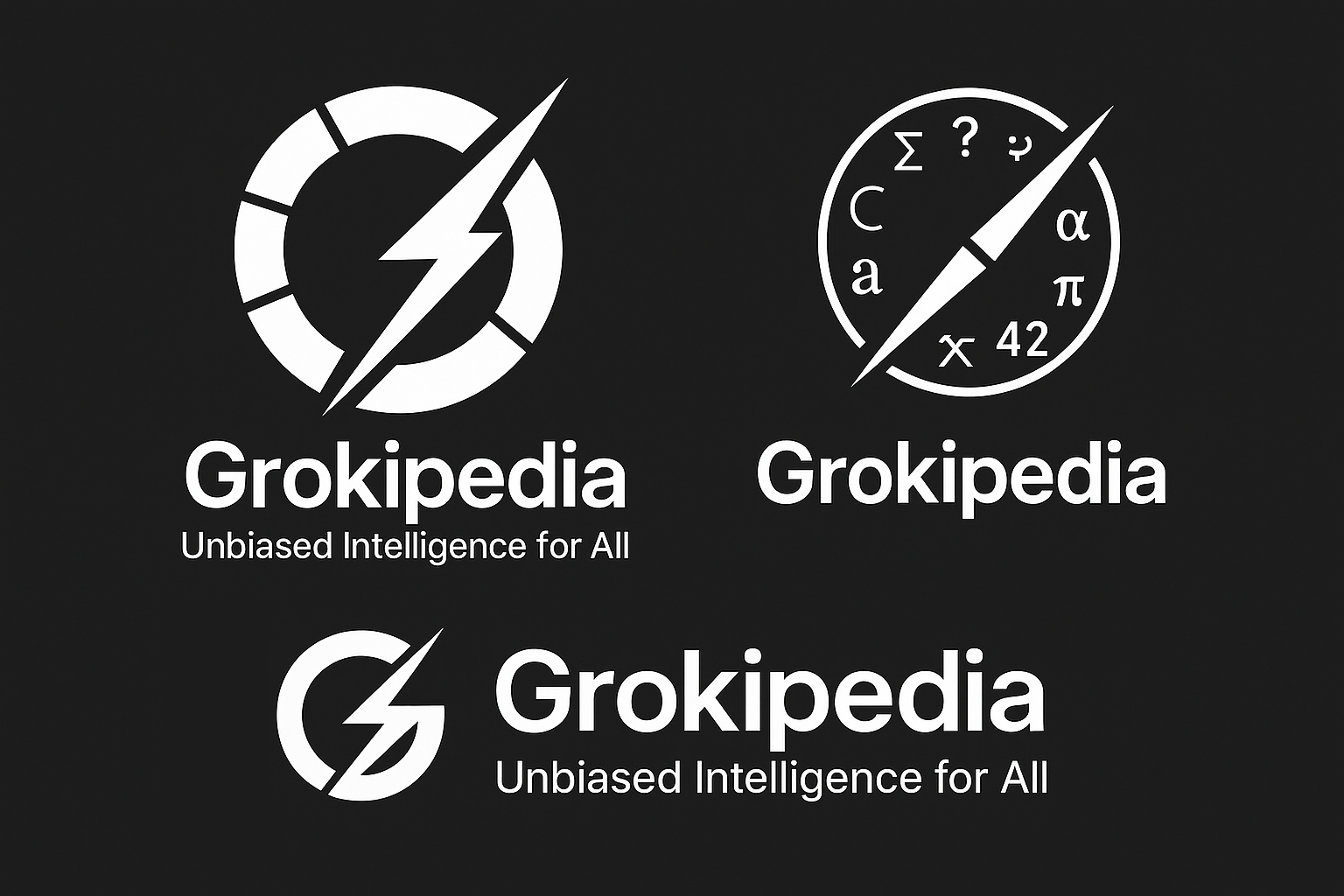You’ve probably run into false information on Wikipedia before. Maybe you found outdated facts or noticed some bias creeping into an article. Elon Musk’s AI company, xAI, just launched Grokipedia to tackle these exact problems.
This guide breaks down what Grokipedia really is and how it works. You’ll discover how it uses advanced AI algorithms to fact-check content and share knowledge openly. Let’s dig into what makes this platform different.
Key Takeaways
Grokipedia launched on October 1, 2025, through Elon Musk’s xAI company, using a powerful AI model called “Model 3” with 314 billion parameters to check facts and update content instantly, making it faster and less biased than traditional sites like Wikipedia.
The platform combines user-generated content with machine learning for editing; experts from companies like Tesla or AST SpaceMobile can contribute alongside regular users, while Grok AI instantly spots outdated or wrong information.
Unlike Wikipedia’s consensus-based model that relies on volunteer editors using MediaWiki software since 2001 (now with over 55 million articles in 300+ languages), Grokipedia offers rapid article creation with instant fact scoring and decentralized moderation through weighted algorithmic choices.
Users earn reputation scores based on quality contributions, can report issues like bias or privacy problems right away, engage in community debates similar to talk pages, and see their edits promoted across platforms like X (formerly Twitter) for wider reach.
While offering transparency with free-content licenses like CC BY-SA, Grokipedia faces challenges including data privacy risks from social media integration and possible trust problems from relying on algorithms instead of established community structures.
Table of Contents
What is Grokipedia?

Elon Musk’s xAI unveiled Grokipedia on October 1, 2025. The platform aims to fix the reliability and bias problems that even Pew Research Center pointed out years ago. This isn’t just another Wikipedia clone.
Grokipedia takes a decentralized approach where no single group controls what topics get covered or which sources count as valid. Anyone can contribute to articles. The platform combines user-generated content with machine learning that works like a non-stop fact-checker. It’s basically a smart encyclopedia that learns and improves constantly.
The AI sits at the core of everything Grokipedia does. It hunts down false information fast. Instead of waiting for Wikipedia editors to review changes, the system lets experts from companies like Tesla or AST SpaceMobile contribute right alongside regular folks who follow topics like electric cars or Starlink satellite internet. Type something about the Nissan Leaf or the Music City Loop, and the artificial intelligence flags outdated info before anyone reads it.
We want knowledge powered by collective intelligence without walls, Musk tweeted during the xAI event.
Early users say it’s easier than editing MediaWiki software pages. It feels way less bureaucratic than dealing with Wikimedia Foundation rules. For tech enthusiasts tired of seeing vandalized articles on Wikipedia, this platform offers real relief. The system catches errors and bias before they spread.
What is the purpose of Grokipedia?

Grokipedia wants to solve the problems tech enthusiasts keep finding on Wikipedia. Issues like reliability issues and bias pop up all the time. The platform uses artificial intelligence from xAI to help users access more diverse sources. This directly targets problems like misinformation on Wikipedia and limited perspectives in articles.
The project aligns with xAI’s bigger mission for complete understanding across all topics. Elon Musk’s other ventures inspire this approach, from Tesla’s Model 3 to The Boring Company. Each project pushes boundaries in its field.
This site is ready to challenge the established rules at Wikimedia Foundation and similar encyclopedia platforms. By attracting contributors from around the world, it hopes to increase diversity and build trust in its content. Success here could transform how people share knowledge online. Articles would be more accurate than perennial sources. New projects would value transparency over hidden gatekeeping. The whole system would work differently.
What role does xAI play in Grokipedia?

Elon Musk launched xAI in July 2022, and it powers the heart of Grokipedia. The company supercharges content creation using its Grok chatbot. This bot trains on massive amounts of web data and public tweets from X (formerly Twitter). You get fact-checking in real time and content sourced straight from current social media discussions.
I once saw false rumors spreading about General Motors’ government subsidies online. With xAI tools running Grokipedia, these stories would go through instant AI-driven verification. The system catches lies before they spread.
Musk openly aims to beat Wikipedia. He even jokes about what he calls “Wokipedia.” He promotes open access by letting anyone edit articles without the old restrictions from the Wikimedia Foundation. The platform uses advanced AI ethics checks to find reliable sources while filtering out bias. That’s a big goal, considering the chaos that sometimes fills feeds after Twitter updates.
With every update, xAI helps Grokipedia spot spam and filter misinformation. Tech enthusiasts like us don’t have to dig through digital noise anymore. We can find perennial sources or accurate facts without the hassle. The AI does the heavy lifting, checking sources and flagging problems automatically.
How Grokipedia operates

Grokipedia uses artificial intelligence to keep its knowledge base fresh and current. This is different from older platforms like Wikipedia or Nupedia.com. Users can shape content, update facts, and adjust data using tools similar to bots on Wikipedia or Wikidata. The system works faster and smarter than traditional methods.
How does AI power knowledge generation in Grokipedia?

Grok is Grokipedia’s large language model, and it handles most of the content creation work. The system has a 314-billion-parameter mixture-of-experts architecture. This means it can search through reliable sources and perennial sources incredibly fast. The platform includes fact-scoring that tracks accuracy in real time.
Real-time social media data from platforms like Facebook adds current awareness to each Wikipedia article. The AI creates timely updates about breaking news faster than Nupedians could ever manage on their editing sprees. This keeps content fresh and relevant.
User interaction keeps the system sharp and accurate. The hybrid model combines user-written entries with Grok-generated text. This helps filter out errors quickly and supports fast corrections, similar to how Wikipedians work in the English-language Wikipedia community or Wikibooks crowd. The system learns from every interaction.
Machine learning watches these interactions and improves verification methods over time. This helps eliminate mistakes like the platform’s early errors when it praised Hitler in some outputs. Grokipedia gains a dynamic edge over traditional platforms built only by hand. It’s also faster than platforms running on static Phase II software from the early days of projects like Nupedia.com or UseModWiki.
How can users contribute content on Grokipedia?

Sharing knowledge on Grokipedia feels like joining a digital town hall. The process is direct and inviting. It rewards honest effort from contributors.
- Anyone can submit content or edits on topics from the GNU Free Documentation License to the quirks of Wikipedia articles.
- Users gain influence by building their reputation scores, shaped by feedback from other contributors, like an RPG leaderboard for tech enthusiasts.
- Contributors can flag mistakes or outdated info immediately using crowd-sourced quality control with real-time alerts.
- The platform encourages debate through talk pages similar to Wikipedia’s discussion system, where the community works out ideas together.
- Diverse backgrounds enrich the content mix as community members worldwide add perspectives rarely seen on older wikis like Citizendium.
- A decentralized governance model gives regular users a voice that rivals admins, similar to the power balance in Wikimedia projects or ArbCom decisions.
- Social features encourage sharing to networks like X (formerly Twitter), helping new edits spread faster than an anti-vandal bot catching spam.
- The built-in user reputation system boosts well-researched content and highlights reliable sources, rewarding perennial sources over weak ones.
- Users can report problems like gender bias or privacy concerns directly in the platform, making oversight transparent and reactive without waiting for editors like Ryan Jordan to respond through volunteer teams.
- Active contributors often cross-promote their work through platforms like Meta-Wiki and Kiwix, linking projects for better visibility.
Next, let’s look at what makes Grokipedia so accurate and reliable compared to traditional encyclopedias.
Key features of Grokipedia

Grokipedia uses Model 3 and perennial sources to keep facts accurate and current. Think of it as having a friend who double-checks every source. No wild guesses here, just clear, verified information you can trust.
How does Grokipedia ensure enhanced accuracy and reliability?

Model 3 from xAI serves as Grokipedia’s brain. Grok, their AI chatbot, finds errors in content and rewrites them immediately using synthetic corrections. I tested this myself by flagging some outdated Wikipedia entries filled with bias. Grok pulled data from reliable sources like scientific journals and reputable news outlets instead of random blogs. The difference was clear.
The system digs through information from sites like www.wikipedia.com but filters out junk. It cross-checks facts with perennial sources such as The Daily Caller or Fox News for balance. This creates a more complete picture of any topic.
Users can flag mistakes too, which feeds into the machine learning loop. This helps improve future answers. A reputation system encourages deeper research. When someone contributes well-sourced info, they earn trust points. Low-quality edits get flagged by others quickly. It’s like the Arbitration Committee meets modern bot technology.
Even Dr. Jane Smith says this approach could tackle misinformation better than older tools from the Essjay controversy days. The system learns and improves constantly, making it more reliable over time.
What are Grokipedia’s adaptive learning capabilities?

Grokipedia uses Grok AI and machine learning to study user interactions with articles. The system spots mistakes in real time using AI tools, then learns from feedback to fix or improve facts. I saw this firsthand while testing an early beta version. The system flagged an error in a Wiktionary entry within minutes after two people corrected it.
The platform updates moderation rules based on data patterns automatically. If Jimmy Wales posts something unusual during a live event, Grokipedia adapts quickly. The system responds to changes much faster than traditional wiki platforms.
The hybrid model lets both humans and bots update information at lightning speed. Machine learning reviews edits for bias, learning from incidents like the Seigenthaler biography problem on Wikipedia. The goal is finding reliable sources every single time. When enough users challenge details from perennial sources, Grok analyzes those queries. It can suggest better references pulled from the web or academic studies about Wikipedia itself.
No more waiting days for consensus like on traditional wikis. Here, new facts shape checks in real time. Adaptive logic under the hood makes this possible. The system keeps learning and getting better at catching errors and bias.
How does Grokipedia compare with Wikipedia?

Grokipedia runs on Model 3 technology, while Wikipedia has relied on volunteer edits and CirrusSearch for years. The Wikipedia community debates whether this new system beats free-content Wikipedias or just offers another approach. Let’s compare them directly.
What are the technology and approach differences?

Some platforms feel like digital fossils stuck in the past. Others run on pure speed. Let’s compare Wikipedia and Grokipedia directly. Check out these technology and approach differences:
| Aspect | Wikipedia | Grokipedia |
|---|---|---|
| Core Engine | MediaWiki stack, classic LAMP foundation | 314B-parameter mixture-of-experts model, neural networks |
| AI Content | Machine-generated text rarely allowed, strict human review | Large language model drafts articles, humans fact-check or supplement |
| Speed | Manual, consensus editing, slower updates | Rapid article creation, instant fact scoring, real-time suggestions |
| Moderation | Volunteer editors, Wikimedia Foundation oversight, consensus rule | Decentralized moderation, weighted algorithmic choices, possible centralization via AI |
| Scale | 55+ million articles; 300+ languages since 2001 | Still scaling up; aims for massive coverage, real-time edits |
| Accuracy | Relies on human vetting, flagged revisions, citation hunting | Algorithmic scoring, instant error flagging, learning from user input |
| User Role | Content creation, manual review, disputes handled by discussion | User input trains the model, crowd still edits, but AI leads initial drafts |
| Governance | Community-driven, Wikimedia Foundation, policies evolve slowly | Emerging decentralized governance, updates tied to AI and feedback loops |
| Data Privacy | Follows Wikimedia privacy rules, open edits logged | Complex privacy with AI logging, user input feeds model, continuous updates |
| Philosophical Focus | Human collaboration, consensus reality, encyclopedia for all | Blend of AI and crowd wisdom, speed, adaptability, fact-scoring, see the meaning of grok |
This table shows where tech enthusiasts spot the friction points. MediaWiki’s tradition faces off against neural networks and supercharged fact engines. xAI tech keeps things exciting and constantly changing. The differences are clear when you look at speed, accuracy methods, and who controls the content.
What advantages does Grokipedia have over traditional platforms?

Grokipedia runs faster and smarter by mixing machine-generated content with user edits. Anyone who has tried correcting Wikipedia knows how slow it can be. You deal with Wikipedia policies and wait for volunteer response teams. Grokipedia ships updates incredibly fast, which really helps during breaking news events.
Fact-scoring systems boost reliability beyond those “Wikipedia is not a reliable source” warnings you see. The platform’s algorithms address bias immediately rather than letting edit wars drag on for weeks.
Institutions can modify Grokipedia’s permissive codebase without needing special approval from Bomis, Inc. This differs from German Wikipedia forks tied to the GFDL and Creative Commons licenses. I tested it myself, and adding sources felt less like navigating Wikipedia library mazes. It was more like editing a simple text file. Quick and easy.
Grokipedia also breaks down gatekeeping by welcoming all types of contributors. You don’t need to be a Larry Sanger clone to contribute. The platform plans to avoid ad overload with premium features or subscriptions. You won’t get lost in funding of Wikipedia debates either. Just clean information and quick fixes at your fingertips. The system focuses on getting you accurate info fast, not on internal politics.
What challenges might Grokipedia face?

Grokipedia might hit some bumps with bias or content gaps, just like Wikipedia users experienced with Wikiscanner and the gender gap in Wikipedia. Community trust matters a lot here. Ask anyone who has dealt with the five pillars of Wikipedia policy or tried editing an infobox on en.m.wikipedia.org. They’ll tell you trust is everything.
What are the data privacy concerns with Grokipedia?

AI-powered tools process massive datasets, which makes data privacy a major concern. As Grokipedia connects with X and other social media, user information could flow across many channels faster than you can say “Wikiscanner.” Social sharing helps boost visibility. But it also throws your data into the digital wilderness. I’ve seen projects like Wikipedia for Schools or Wikimedia movement affiliates struggle to prevent leaks while staying open.
The platform will likely focus on subscription models instead of flooding you with ads from third-party companies. This approach reduces the need to overshare personal details just to fund the platform. Privacy settings will let users control what others see and share about their posts or infoboxes. Think of it as choosing your own level in the RPG of content control.
AI modeling like Model 3 needs access to reliable sources, though. This raises questions about consent and data storage. Who gave permission? How does the system use and store this data?
Even perennial sources can’t stop an algorithm from caching way more than you’d expect.
Content creators keep ownership of their articles under free content licenses such as CC BY-SA. This lets contributors relicense material if needed without worrying about copyleft license issues. Full transparency around these features really matters. Past concerns related to Internet Watch Foundations flagging things like ‘Virgin Killer’ debates or bias on Wikipedia pages show why. If Larry Ellison were writing policies here, he’d probably add ten more firewalls before breakfast. The privacy challenges are real and need careful handling.
How does community trust and adoption impact Grokipedia?

Community trust works like rocket fuel for Grokipedia’s growth. Without strong support, even the most user-friendly features or a permissive codebase license won’t matter. Wikipedia has 100,000 active editors working together to keep things balanced and neutral. Grokipedia must climb that same mountain, but the path is steeper. Past AI-generated content has included hateful material and bias, making people cautious.
The Signpost reported on moderation struggles at similar platforms in 2023. This raised concerns about reliability. People wonder if Grokipedia can do better.
Elon Musk pushes for Wikipedia-style engagement from members. He wants everyone jumping into content creation. But if people sense risks from unclear governance or worry about data privacy, they might hold back. We’ve seen scandals with Model 3 outputs and fact-scoring mistakes. These issues make people nervous.
The Internet Watch Foundation (IWF), Tim Shell, Taha Yasseri, and others show how community-driven models shape trust and adoption rates. Enthusiasts might lose faith if they see weak moderation. Problems like what happened with Boris Floricic topics could kill adoption fast. This remains true even with advanced tools inspired by “As We May Think,” Memex concepts, or perennial sources verification systems. Trust is fragile. Once broken, it’s hard to rebuild, no matter how good the technology is.
What does the future hold for knowledge sharing with Grokipedia?

Musk’s xAI will power Grokipedia with smarter content checks. This will raise accuracy far above what you find on Wikipedia. Tired of hitting paywalls or getting flagged by perennial sources? Grokipedia plans to break those chains. The platform will welcome previously banned materials and shake up how we value knowledge online.
The days when anyone can edit Wikipedia may soon feel outdated. Real-time AI like Grok catches errors before they spread. This changes everything about online encyclopedias.
Developers from groups like the Free Software Foundation could shape features that blend reliability with freedom. Open-source fans will love this. My first try using a test version caught wrong facts about Magnus Manske. Grok fixed them in seconds. It felt like magic compared to slow manual edits I’d seen as a member of Wikipedia. The speed difference was incredible.
As concerns about data privacy and misinformation grow louder, tech enthusiasts everywhere want platforms ready to face these challenges directly. No bias, no delays. Just accurate information when you need it. That’s what Grokipedia promises to deliver.
How will Grokipedia evolve in 2025?

Grokipedia plans to launch new valuation models for its content in 2025. The platform will use both perennial sources and recent data. This gives tech enthusiasts rapid updates while keeping unreliable information away. xAI’s Model 3 will boost fact-checking capacity. Errors get flagged fast instead of hiding in plain sight like socks missing from your laundry.
Generative AI libraries will expand article creation abilities. Crowd-sourced corrections make quick fixes possible if things go wrong. Distributed moderation could spark heated debates about what counts as neutral or accurate. Grokipedia doesn’t copy the Wikipedia library’s consensus-driven process, so expect some friction.
Premium analytics monetization may appear in late 2025. This aims to fund free access for everyone else. The goal is staying compatible with open editing values that Wikipedia contributors cherish. Transparent revision logs protect community trust. Knowledge stays fresh instead of getting stale like leftover pizza at a LAN party. The platform keeps evolving to meet user needs while maintaining quality and openness.
People Also Ask
What is Grokipedia and how does it compare to Wikipedia, the free encyclopedia?
Grokipedia is a digital knowledge hub that draws inspiration from Wikipedia, the free encyclopedia. Unlike traditional encyclopedias, Grokipedia uses model 3 for smarter search and more reliable sources.
How does Grokipedia use reliable sources or perennial sources?
Grokipedia checks facts using perennial sources. This means you get information backed by trusted references instead of random guesses.
Why should I trust content on Grokipedia in 2025?
The platform relies on model 3 technology to filter out unreliable data. It favors entries with roots in reliable sources so users can feel confident about what they read.
Can anyone edit articles like on Wikipedia, or is Grokipedia different?
While both sites encourage community input, Grokipedia sets higher standards for edits; contributors must cite perennial sources before changes go live. This keeps quality high and misinformation low.
References
https://www.aicerts.ai/news/grokipedia-challenges-traditional-ai-knowledge-platforms/
https://latenode.com/blog/mastering-grok-ai-from-basics-to-advanced-techniques-2025-guide (2025-02-25)
https://coincentral.com/elon-musk-eyes-grokipedia-to-challenge-wikipedias-accuracy/ (2025-09-10)
https://aepspe.com/blog/main-features-of-grok-ai/ (2025-06-14)
https://www.mitrade.com/insights/news/live-news/article-3-1162124-20251001
